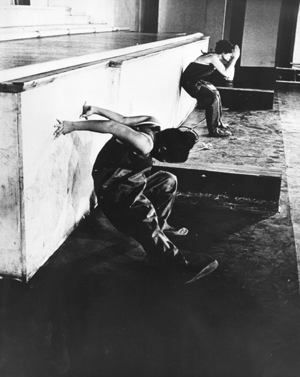
Choreographer, writer, editor, dramaturge, director and my friend Carla Blank has just written this obituary in Dance Magazine.
But it came two years late as her longtime collaborator’s death had been kept secret by her family.
Japanese dancer and choreographer Suzushi Hanayagi is the heroine of Robert Wilson’s homage performance piece, “KOOL: Dancing in My Mind,” which debuted in 2009 at the Guggenheim Museum in New York.
Hanayagi collaborated with Wilson for his major works from the 1980s through 1999, helping define the stark movement vocabulary that became trademark Wilson.
Suzushi was trained in the Hanayagi and Inoue dance schools, but also studied under Takehara Han.
Mixing schools was unknown and abhorred in Japanese tradition.
But Hanayagi was already a modern dancer as well and knew what she wanted.
She went to New York, at the invitation of Martha Graham, and started performing her own works, including at the Judson Dance Theater, in experimental collaborations with Blank.
Their creation made for a stunningly unique statement, rooted in classical Kabuki dance that is abstracted and linked in approach, form and idea to American modern dance _ in the same way other forms of the Japanese art, craftsmanship and design, exemplified in pottery, woodblock prints, Noh music and rock gardens, have a definitive conceptual affinity to modern art.
Some of Blank and Hanayagi’s works _ as playful as they were at times political, but always unafraid, everyday yet unabashedly personal _ were recreated in “KOOL,” along with photos and video of Hanayagi, in past works and in recent years, ill with Alzheimer’s in an Osaka instition.
The most tragic thing about Suzushi’s remarkable life is that she is all but forgotten as a pioneer artist in her home country, especially when women of her generation are finally starting to win the recognition and respect they so deserve as inspiring role models for this nation’s still under-utilized but multi-talented women.
Now, Japan will have an opporutnity to learn more about Suzushi Hanayagi and her artistic vision in a documentary film, directed by Richard Rutkowski and produced by Hisami Kuroiwa, “The Space in Back of You,” in which Blank as well as Wilson, David Byrne and Anna Halprin also appear.
The film is being shown at Theater Image Forum in Shibuya, Tokyo, SAT Sept. 29, 2012, 9 p.m. and SAT Oct. 9, 2012, 9 p.m. as part of the Dance Triennale Tokyo festival.
